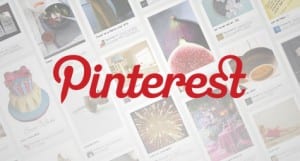 Capping one of the longest marketing stripteases in Silicon Valley history, scrapbooking site Pinterest is now open for business.
Capping one of the longest marketing stripteases in Silicon Valley history, scrapbooking site Pinterest is now open for business.
As with all popular social networks bereft of advertising and actual non-VC generated revenue, the introduction of advertising is complicated. There are a lot of variables to consider, not the least of which is … at what ad saturation point do your loyal users begin abandoning the site and driving down your value proposition?
Instagram is a strong example of strict controls on advertising. Despite its parent company being Facebook, Instagram has shown tremendous resolve to ensure that their paid posts comply with strong visual guidelines, are not overly promotional and are true to the brand. You even have to have a significant portfolio of strong imagery (>30 images) before you can even begin advertising.
Don’t get me wrong, there are plenty of brands posting garbage every day on Instagram. But, Instagram will likely stop them from poisoning the well with offensive content. Even Instagram’s FAQ basically tells potential advertisers to buzz off.
So here’s where it gets interesting for Pinterest. It is sitting on top what could be the most valuable 60 million users in the world – with Pew reporting that one third of all women in the U.S. use the site. Those are some valuable eyeballs.
Unlike Instagram or Facebook, people on Pinterest are there to get inspiration for things to buy. The users are already in the right frame of mind to receive relevant advertising – if it’s done unobtrusively and is in line with the experience its users have already come to appreciate. Interestingly, the new approach is being led by poached talent from Facebook.
This month, Pinterest took that added step of opening up a business insights API – allowing developers to build software and marketers to gain insights from Pinterest’s treasure trove of data. This is an encouraging move and should result in some great innovations around Pinterest.
And, while no one was looking, Pinterest quietly built one of the best search engines on the entire Internet.
Try it: Search for “blue curtains” on Google and see the results. Now search for “blue curtains” on Pinterest. The quality and specificity of Pinterest’s results are jarring.
But search isn’t Pinterest’s sweet spot, just a great by-product. Like Instagram, growing its international user base will be as critical as the introduction of advertising and the opening of the API. As Pinterest’s own head of international business says, “We’re not a viral product. It’s just word of mouth.”
Well let me help spread that word of mouth: Marketers, if you aren’t exploring Pinterest, you have two excuses (and both are bad):
• You don’t understand or aren’t prepared for the visual Web.
• You don’t want to sell things.
The second excuse is unbelievable; the first is, increasingly, inexcusable.


